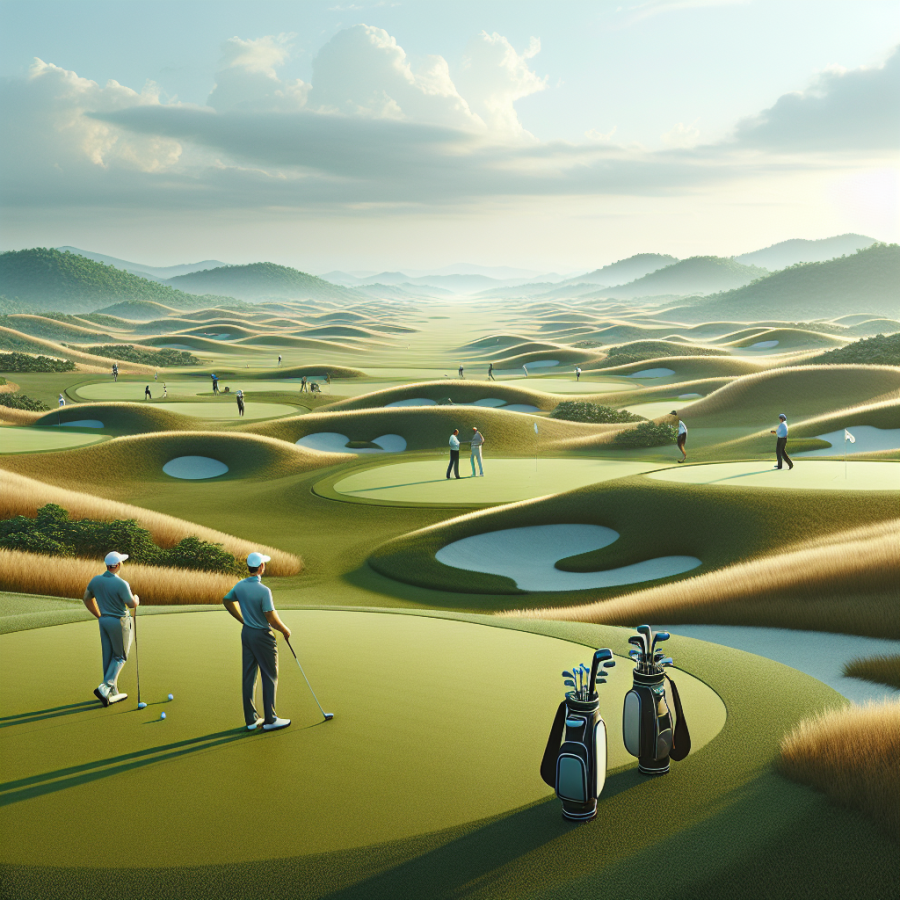Breaking Down the Parts of a Golf Course: Key Terminology and Features
When delving into the exciting world of golf, understanding the terminology associated with a golf course is crucial. Amateur golfers and seasoned professionals alike use this language, enhancing communication and offering a more in-depth appreciation of the game. In this post, we will dissect the specific components of a golf course, assisting in expanding your golf lexicon.
The average golf course is comprised of a variety of different features, each with its own name and unique set of characteristics. Let's begin with a general overview:
The Hole: Arguably the heart of the sport, the 'hole' refers to both the physical hole in the ground aimed to capture the golf ball and the surrounding area called the green. Each hole on a course has a par value, which signifies the standard number of strokes that a golfer should ideally play to get the ball in the hole.
The Green: As mentioned earlier, the green encompasses the hole. This area surrounding the hole is intensely manicured and maintained, ensuring the smoothest surface for putting. The green is surrounded by a fringe area, which often acts as a boundary between the green and the rest of the fairway or rough.
The Tee Box: This is where the journey of each hole begins. Golfers start their play on each hole from this designated area. Tee boxes are usually arranged at various distances from the green to accommodate players of different skill levels.
The Fairway: As the main thoroughfare that players attempt to keep their ball on, the fairway is the direct route between the tee box and the green. Fairways offer an optimal lie for golfers to hit their subsequent shot and are typically comprised of short, evenly-cut grass.
The Rough: Surrounding the fairway is the rough – an area usually characterized by longer, heavier grass. Ball control and distance are often hindered when a ball lands in the rough, making it an area that golfers usually attempt to avoid.
Hazards: Typically found lining the fairway or near the green, hazards include bodies of water (water hazards) or bunker (sand threats), that add additional challenges to the game. Golfers are penalized if they land the ball in a hazard and must navigate properly to continue gameplay.
Out of Bounds: This term refers to areas designated as outside the parameters of the hole currently being played.
Read also:
Exploring the Abundance of Golf Courses Around the Globe
Understanding Basic Golf Terminology: Naming the Playing Area
Understanding basic golf terminology is crucial for both newbies and seasoned golfers. It helps you to make better communication and understanding of the sports by knowing its jargon. This section will clarify certain golf terminologies, particularly those relating to the playing area.
Firstly, the playing area in golf is typically referred to as the "course." A golf course is a large area of land designed and groomed for playing golf. It consists of 18 distinct sections called "holes," although smaller courses may only have nine holes. Each hole contains a teeing ground, a fairway, rough and other hazards, and a green with a pin and a cup.
The "teeing ground" or "tee box" is the starting point for each hole on the golf course. Players tee off from this area, which often contains markers showing where players can place their balls.
A considerable part of any golf course is the "fairway." This meticulously maintained area is the intended path from the tee box to the green—the more closely mown part of a hole's hole where the grass is typically shorter. Golfers aim to keep their balls on the fairway to ensure cleaner shots and a clear path to the green.
On both sides of the fairway, you'll find the "rough." This area is a more unkempt part of the course where the grass is typically longer. It's best to avoid the rough because it can make shots more unpredictable and challenging.
Then there are "hazards," as the name suggests, these are areas that pose obstacles to golfers. They come in two forms: water hazards like streams, lakes, and ponds; and bunkers or sand traps, which are shallow pits filled with sand.
The "green" is a very smooth and flat area at the end of each fairway, near the hole, where players shoot their golf balls into the "hole" or "cup." The grass on the green is cut extremely short, which allows the ball to roll smoothly with the putter's help.
The “pin” or “flagstick” is a marker that stands in the hole and indicates the hole's location. Golfers aim for the flagstick when they are striking the ball towards the green.
While this list of golf course parts is not exhaustive, it introduces some key golf course terms that every player should be familiar with.




